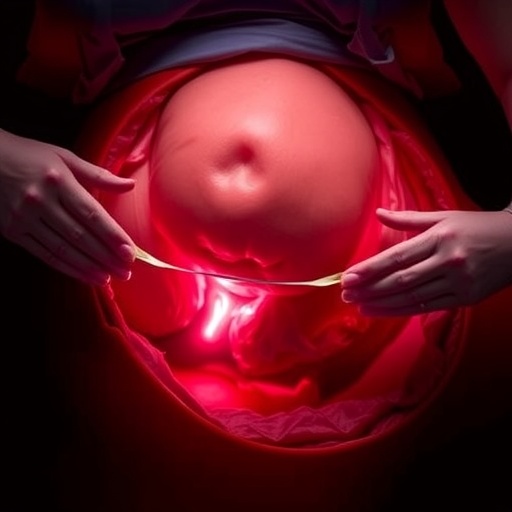
Obesity has long been considered a modern epidemic, driven primarily by environmental factors such as calorie-rich diets and sedentary lifestyles. However, new insights from a recent article published in the International Journal of Obesity suggest that the human body’s response to excess weight is far more complex, deeply rooted in biology, behavior, and evolutionary history. This article offers a compelling exploration of how evolutionary adaptations that once ensured survival in times of food scarcity may now paradoxically promote obesity in today’s world of food abundance and chronic stress.
At the heart of this discussion is the concept of fat as a survival mechanism. For millennia, humans evolved to store energy efficiently during periods of food availability in preparation for famine or scarcity. This biological imperative ensured that our ancestors could endure prolonged periods without sufficient nourishment. Fat storage, particularly in the abdominal cavity, served as a critical reservoir of energy. While this adaptation was vital then, the contemporary milieu—with constant food accessibility and significantly reduced physical activity—has turned this once-beneficial trait into a liability, fueling the global rise in obesity rates.
Central to the article’s thesis is the Thrifty Gene Hypothesis, a theory proposing that certain genetic traits were naturally selected to enhance metabolic thriftiness. These genes favored individuals who could store fat more efficiently, thereby promoting survival during unpredictable environmental conditions. However, in modern times, these very genes may predispose individuals to excessive weight gain when exposed to calorie-dense foods and sedentary habits. While the hypothesis provides a biological foundation for genetic susceptibility to obesity, it remains contentious within the scientific community. Critics argue that the complexity of obesity transcends simple genetic explanations, highlighting the influence of diverse lifestyle and environmental factors.
Complementing this genetic perspective is a detailed analysis of the General Adaptation Syndrome (GAS), a model describing the body’s physiological response to chronic stress. According to the article, prolonged stress triggers sustained elevation of cortisol, the body’s primary stress hormone. High cortisol levels have multiple metabolic consequences: they encourage deposition of visceral fat and interfere with the regulatory systems governing hunger and satiety. This creates a vicious cycle where stress-induced hormonal imbalances promote overeating and fat accumulation, particularly in the abdominal region, which epidemiologically correlates with increased risk of metabolic diseases, such as type 2 diabetes and cardiovascular disorders.
Importantly, the authors propose a novel idea that chronic stress in modern environments may co-opt fat accumulation as a buffering mechanism. From an evolutionary standpoint, accruing fat could constitute a physiological strategy to endure unpredictable or adverse conditions. In modern life, this translates to stress-related obesity, where the body’s adaptive machinery interprets psychosocial pressures as threats requiring additional energy reserves. This reframing broadens the traditional scope of obesity research, incorporating psychological and neuroendocrine factors alongside genetic and metabolic dimensions.
The article also emphasizes that although the genetic architecture influencing fat storage and metabolism can evolve, the underlying physiological mechanisms remain remarkably conserved over millennia. This evolutionary stasis underscores the challenge of addressing obesity through purely biological interventions, as these ancient systems are deeply integrated with other critical survival pathways. Consequently, tackling obesity effectively demands multidisciplinary approaches that engage behavior modification, stress management, nutritional science, and public health initiatives.
Further dissecting the role of cortisol reveals a finely tuned but delicate hormonal feedback loop. Cortisol not only mobilizes glucose availability during stress but also modulates appetite-regulating neuropeptides in the hypothalamus. Chronic elevation, however, disrupts this balance, fostering hyperphagia and preference for high-calorie “comfort foods” rich in sugars and fats. This neuroendocrine perturbation provides a mechanistic link between psychological stressors and obesogenic eating behaviors observed in diverse populations facing modern societal challenges.
Moreover, the persistence of the Thrifty Gene Hypothesis in obesity discourse evokes broader questions about gene-environment interactions. While genetic predispositions confer risk, environmental triggers such as high-fat diets, urbanization, and socio-economic stressors manifest as critical mediators. This complexity elucidates why obesity prevalence varies widely among different ethnicities and populations, despite shared ancestral genetic backgrounds. It also highlights the adaptive plasticity of human physiology in response to shifting environmental pressures.
Expanding on evolutionary insights, the article discusses how ancient survival strategies like fat accumulation for energy storage converge with contemporary psychosocial stressors to influence disease risk profiles. The maladaptive manifestations in today’s context exemplify evolutionary mismatches—situations where traits once advantageous become problematic under new environmental conditions. This maladaptation paradigm is vital for understanding not only obesity but also other chronic conditions linked to modern lifestyle transitions.
Behavioral science perspectives integrated into the article shed light on how stress and obesity intersect at the level of decision-making and habit formation. Chronic stress can impair executive functioning and self-regulation, leading to diminished capacity to resist unhealthy food choices. This adds a psychological dimension to biological vulnerability, reinforcing the need for holistic interventions targeting both mind and body.
The authors also caution against reductionist interpretations of obesity. While genes and hormones play pivotal roles, social determinants such as access to healthy food, education, economic status, and cultural norms are potent modifiers of individual risk. Public health frameworks must therefore transcend molecular explanations and incorporate socioecological models that address systemic inequities contributing to the obesity epidemic.
In conclusion, this comprehensive exploration provides a nuanced understanding of obesity as a multifaceted phenomenon shaped by ancient evolutionary imperatives, hormonal stress responses, and modern environmental challenges. It encourages a shift away from simplistic blame on personal responsibility toward recognition of the intricate biological and psychosocial factors at play. Such insights pave the way for more effective, personalized, and compassionate strategies in obesity prevention and treatment.
The study ultimately highlights the resilience and adaptability of human physiology, even as it grapples with unprecedented lifestyle transformations. Recognizing obesity as a mismatch between evolved biology and current contexts compels researchers and clinicians to develop innovative approaches that reconcile our evolutionary heritage with the demands of contemporary living.
By bridging genetics, endocrinology, evolutionary theory, and behavioral science, this research enriches the discourse around obesity. It propels a forward-thinking agenda geared toward mitigating the global burden of obesity-related diseases while honoring the complex interplay of factors that have shaped human health across time.
Subject of Research: Human biological, behavioral, and evolutionary adaptive responses to obesity
Article Title: Human adaptation response to obesity
Article References:
Jahanbani, A., Rezazadeh, D., Sajadi, E. et al. Human adaptation response to obesity. Int J Obes (2025). https://doi.org/10.1038/s41366-025-01791-9
Image Credits: AI Generated
DOI: https://doi.org/10.1038/s41366-025-01791-9
Keywords: Obesity, Thrifty Gene Hypothesis, General Adaptation Syndrome, chronic stress, cortisol, fat storage, evolutionary biology, metabolic adaptation, neuroendocrinology, psychosocial stress, metabolic disease, evolutionary mismatch
Tags: biological responses to excess weightcalorie-rich diets and healthenergy storage mechanisms in humansenvironmental factors influencing obesityevolutionary adaptations to food scarcitygenetic traits and obesity susceptibilityhuman evolution and obesityimpact of sedentary lifestyles on healthobesity and chronic stress connectionsobesity as a modern epidemicsurvival mechanisms in human historyThrifty Gene Hypothesis explained





